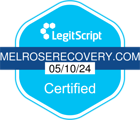FAQ
FAQ (Frequently Asked Questions)
Taking those first steps toward treatment and recovery can be difficult. Our staff is here to help you every step of the way. The purpose of the admissions process is not only to assist you or your loved one with the transition into treatment but also to ensure we have the information needed to match you with the appropriate care that fits your specific needs. During the admissions process, we will walk you through initial assessments and paying for rehab. We also coordinate whatever else is required to help you take the first steps toward recovery, including any necessary interventions.
Traveling for treatment lets you take a step back from the driving forces behind your addiction, whether they are stresses, individuals, or situations. Choosing to receive treatment in your local area can make it difficult to focus on what is most important, which is your recovery. Benefits of traveling for treatment:
- Traveling allows you to escape negative social environments such as friends who abuse drugs or alcohol or strained family relationships.
- Traveling removes you from stressful work environments.
- Being away from home allows you to fully focus on your rehabilitation.
- Putting physical distance between you and familiar environmental and social substance-use triggers aids in the recovery process.
Yes, you can. Spending money will be locked in the office.
Research shows the longer clients stay in treatment, the better their chances of sustained recovery. To ensure maximum success, we offer 30-60 day programs based on individual needs.
Addiction detox is a very important part of the recovery process because it removes toxins from the body caused by chemical dependency in a safe, medically supervised setting. The detox process typically lasts between 5-7 days and can be unpleasant at times. However, clients can expect our staff will make detox as manageable as possible, with features including individualized detox/tapering plans.
No. Detox is not a stand-alone treatment option. Research shows the longer the time between detox and residential treatment, the greater the risk of relapse. This is why clients immediately transition from the detox program into one of our addiction treatment programs.
An aftercare or discharge plan is a collaborative effort between the client and treatment team that helps the client cope with post-treatment challenges. Aftercare arranges for ongoing success in all areas of life. All of our clients leave treatment with a detailed aftercare plan complete with the contacts and resources needed to continue along the road of recovery—like medical appointments, local therapeutic resources, 12-step support groups, sober or transitional living, or any necessary means of continued support. Aftercare also includes follow-up calls between staff and clients.
Some of the symptoms of withdrawal from alcohol or drugs are the result of the toxic effects of these chemicals on the brain. Collectively, these symptoms are called Post Acute Withdrawal (PAW). PAW can be more severe for some patients than it is for others.
The Post Acute Withdrawal stage is when the symptoms and signs of withdrawal begin to take place. All substances have different effects on the body so it’s not easy to determine exactly how long a person’s stage of acute withdrawal will last. Withdrawal symptoms can start in just a matter of hours after an addicted person stops their use or days later, it depends on the substance and level of use and addiction.
Sober living environments are facilities typically located in quiet areas that provide structure and support for people in recovery. Residents of these homes are expected to re-connect with society while living among peers undergoing the same transition. Many individuals enter sober living environments to help them make a smooth, sober transition from residential treatment to independent living. Common features of sober living include:
- Strict set of house rules, including hygiene, safety, and life-skills.
- Self-accountability for maintaining the facility and completing assigned chores and responsibilities.
- A zero-tolerance policy for drugs, alcohol, and even household items with high levels of alcohol content such as mouthwash, aftershave, and opiate-based cold medicines.
Halfway homes, commonly mistaken for sober living, are transitional living environments generally intended to help people reintegrate back into society after being incarcerated. Sober living homes are transitional living environments solely for those in recovery for addiction. As part of our aftercare planning, primary therapists and/or treatment teams help clients find sober living, if needed.

Transform Your Life with Melrose Recovery
If you have more questions about how Melrose Recovery can help change your life, then contact us today at (657) 220-6579. We offer several comprehensive programs that can help turn your setbacks into comebacks, so call us now.









